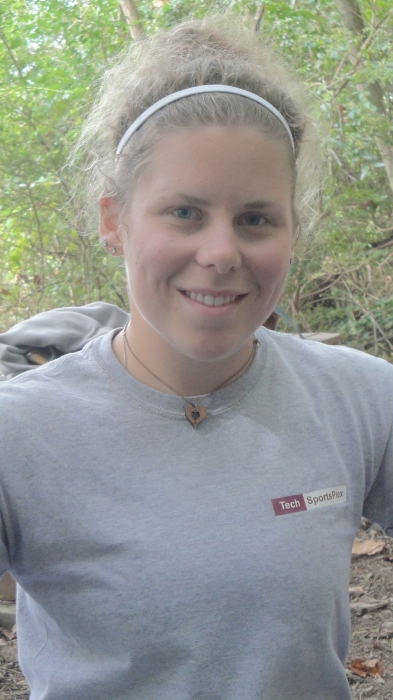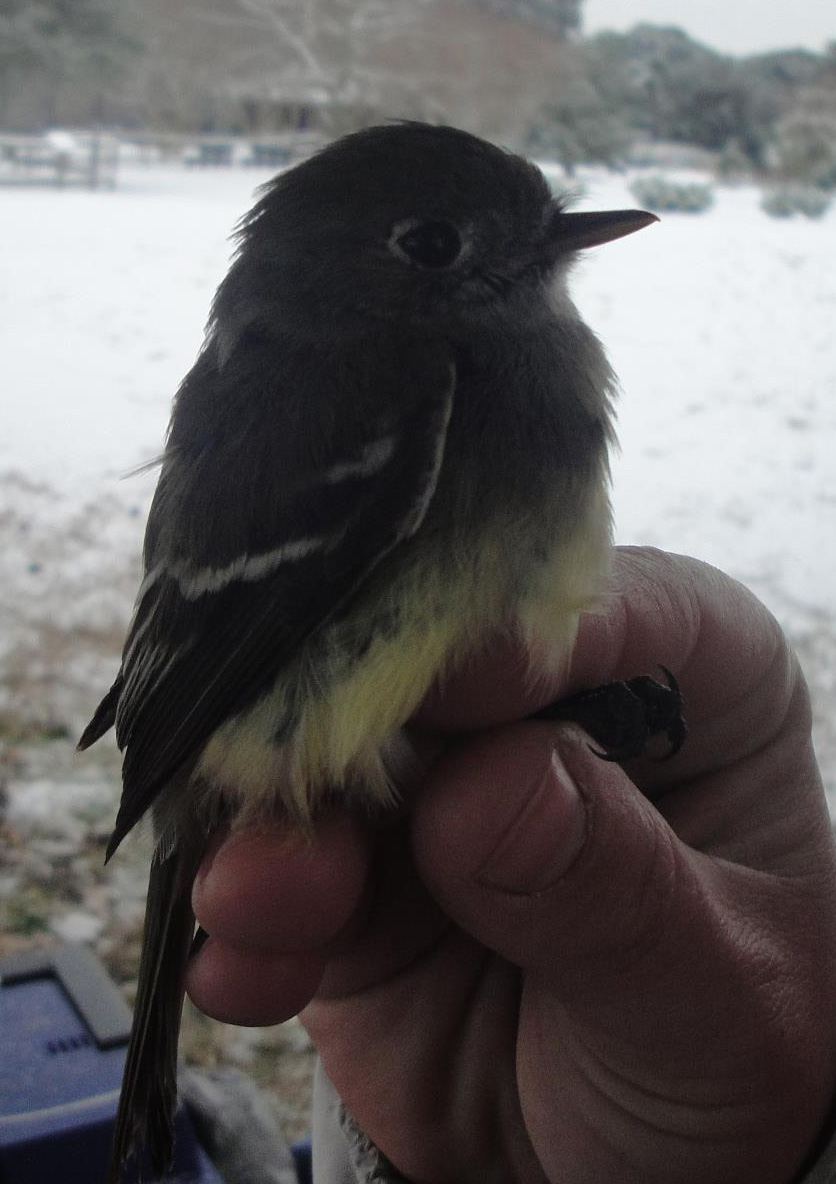ODU Student Adds Dusky Flycatcher to Virginia Bird List
March 26, 2013
 Erin Heller
Erin Heller
 Dusky Flycatcher
Dusky Flycatcher
The Dusky Flycatcher is a petite bird that lives in the western United States in the warmer seasons and typically migrates to Mexico in the winter. But at least one of these birds has been wintering in Norfolk this year and has been identified - through DNA testing - as the first of the species to be found in Virginia.
Erin Heller, a graduate student in the Department of Biological Sciences at Old Dominion University, gets credit for the sighting. Actually, for her, it was more conclusive than a sighting. She has had the bird in hand-twice.
Heller is studying the effects of urbanization on the relationship among birds, ticks and tick-borne diseases in Hampton Roads. "I use nets that are 40 feet long and 10 feet high to catch birds. Then I extract them from the nets, band them with federal bands (from the U.S. Bird Banding Laboratory) and take numerous morphometric measurements. We also check the birds for ticks and remove the ticks if they have any," she explained. "The ticks are later identified in the lab and tested for disease pathogens."
On a cold day in January, with her nets deployed at the Virginia Zoo in Norfolk, Heller came up with a bird she couldn't identify. Not even her mentor, Eric Walters, an assistant professor of biological sciences who teaches a field ornithology course at ODU, could name it. "We took a number of photographs and passed them on to some experts," Walters explained. "That, too, was inconclusive."
A month later, on a snowy day at the zoo, Heller was back out with her nets and caught the same little bird. This time the bird shed a tail feather, which she and Walters dispatched to the Smithsonian Institution's Feather Identification Lab. "This is the same lab that identified the bird species involved in the downing of the U.S. Airways flight, 'the miracle on the Hudson'-in New York City ," Walters said.
Just last week, the pair received the results of the DNA analysis. The tail feather was from a Dusky Flycatcher, never recorded in Virginia. Because the bird's natural territory is so far away, Walters said, visual evidence probably would not have been enough to put the Dusky Flycatcher on an official list of the birds sighted in Virginia. "Thank goodness for DNA. We were surprised," he said.
This species is hard to tell from Hammond's Flycatcher. The Dusky (Empidonax oberholsen) has prominent white eye rings, a grayish back and white/yellow underside. It likes to eat flying insects.
The discovery follows a similar one recently for students working with Walters. In November, his Field Ornithology class was at Back Bay National Wildlife Refuge in Virginia Beach when one of his students identified a bird as the Northern Lapwing, which is common in Europe and Asia, but never before recorded in Virginia.
Like Heller, the graduate student who was primarily responsible for the Northern Lapwing identification, Robin Nadolny, does research focused on ticks and the spreading of ticks by birds. She was assisted in the identification by Walters' graduate student, Natasha Hagemeyer.
Apparently, the Northern Lapwing got to Virginia because it was swept off course during its migration off the coast of Africa by winds of the storm that would become Hurricane Sandy. Walters said he has no idea how the Dusky Flycatcher got to Virginia, far removed from the bird's normal habitat.

